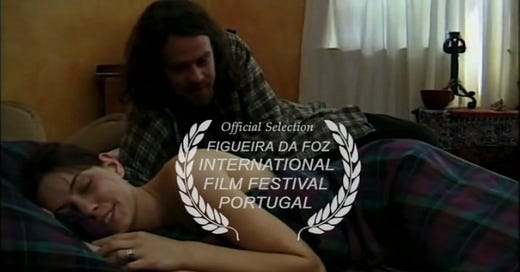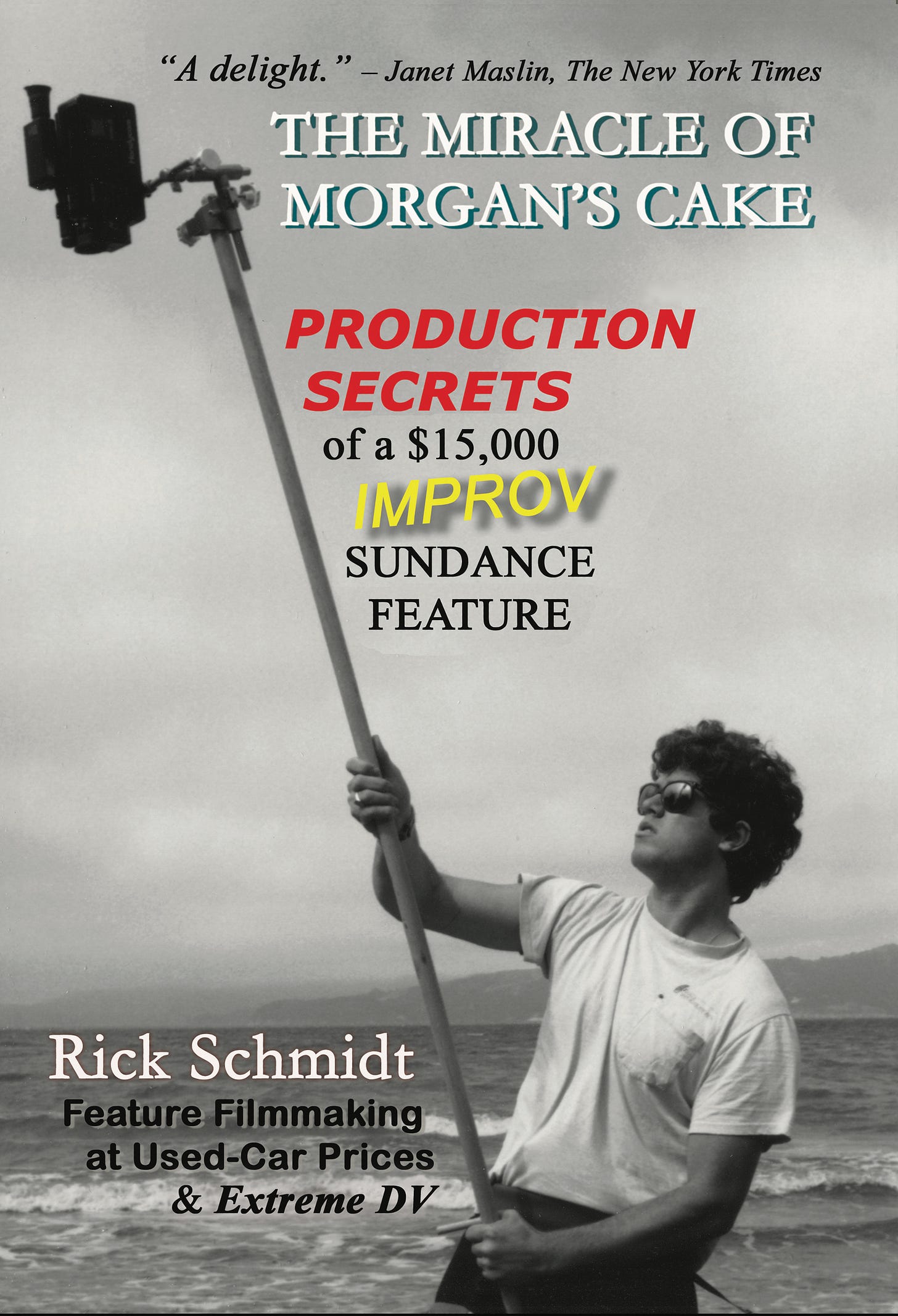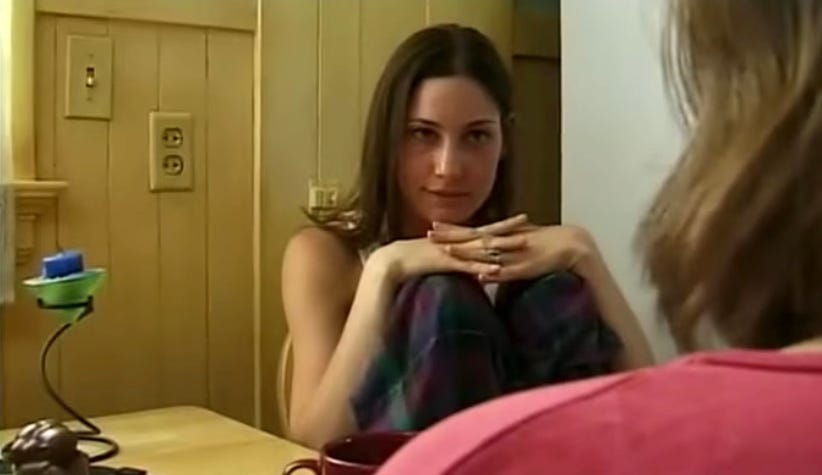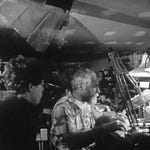“Director's Statement” By Rick Schmidt, Co-Writer/Co-Director/Co-Producer of LONELINESS IS SOUL (from Figueia da Foz Intl. Film Festival catalogue)
To my mind, what makes LONELINESS IS SOUL (94 min., Color, Copyright 1998) so special, so fresh and energetic as a movie, is the method by which it was created. Almost every aspect of the production defies current standard beliefs. Can a movie be conceived, cast with non-actors and professional actors, locations chosen and scenes shot; can music be composed, and editing be completed - can all these tasks be done from start to finish by a filmmaking team of collaborators that includes several untested/untrained people "off the street", in just 10 days? That's how this movie was created. And although I've participated as a Producer and Writer/Director on eight features created by this crash-deadline collaborative process through my FEATURE WORKSHOPS (including BLUES FOR THE AVATAR which premiered at Slamdance Film Festival and at the International Film Festival of Figueira da Foz /Portugal in 1996), being part of this magical process remains, for me, more humbling than anything else. How is it possible? Can we expect "location miracles" every time?
How can non-actors give such great performances? How can we shoot before we know the complete story? How can an editor pull all this improvisational material together—a feature length movie—into a cohesive cut in less than one week?
The answer to the question "how do we do it" begins with the process of selection of collaborators. I select up to ten people who find my "Workshop" website on the internet (http://www.lightvideo.com/workshop.htm), and contact me via an e-mail submission form for upcoming FEATURE WORKSHOPS. So I receive their name and address, and mail back a hard copy application. From returned application, which asks for basic information about their education (from formal to the "school of hard knocks"), their commitment to moviemaking, and a "real-life story" as writing sample, I get a sense of the person, whether he/she can be emotionally open enough, savvy enough, to withstand the process of improvisation that basically rules the set and editing during the 10 days of production. I've had to learn not to be judgmental toward people, realizing that basically everyone has something to say when a creative opportunity is offered. The movies made by FEATURE WORKSHOPS benefit from this interaction between myself and complete strangers from different parts of the country (and the world...one fellow from London just attended the August '98 workshop to help produce a 94 minute movie entitled MAISY'S GARDEN).
To kick off the production, we all meet at a restaurant the evening before the first day of shooting and sign a contract that binds us into a profit sharing team of, usually, around 10 partners. All of us, myself included, agree to receive an equal portion of the gross profits, if any are generated, from the movie we will attempt to make in the next 10 days. I like to believe that at that point the distinction between "teacher and student" ends, and that we are all simply a production company with a super-tight deadline.
To insure consistent quality on these productions, I always back up every shoot with a top-notch crew, usually headed up by my son, Morgan Schmidt-Feng (<Morgan's website>), who Co-Produces with me and performs the task of Director of Photography, supplying his own PRO-DVCAM digital video camera package. Morgan at 18 was Lead Actor and Associate Producer in my 1988 feature MORGAN'S CAKE, shot in 8 days and culled from a scant 2 1/2 hours of footage, which screened at SUNDANCE FILM FESTIVAL (Dramatic Competition), NEW DIRECTORS/NEW FILMS (NYC), as well as BERLIN INTERNATIONAL (Panorama) and 10 other international festivals, so he has been aware of my improvisational style of working from an early age. Together we seem to be able to power over the difficult spots and keep the shoot moving ahead, even when the feature we're making hasn't yet fully revealed its content. Sometimes we have no idea what our movie is about, even two days into a Feature Workshops shoot.
Co-writer/co-director John Balquist, and creator of music lyric ‘Loneliness is Soul’ from his "Cataloging Fears"song, talks about an ‘enlightenment’ moment that came to him one day at the beach.
Wait a minute, you ask. Did you say "you shoot even when you don't know what the movie's about?" Yes, that's right. I think of making movies in this manner as a sort of "role playing game," with real-life people and serious/funny issues leading our developing story along. The essence of LONELINESS IS SOUL began with securing access to an apartment where two of the actors/non-actors lived in Oakland, California. Morgan had helped produce a digital video feature for one of the roommates, John Balquist, and asked if he and his actress/roommate Jessica Heidt might want to participate in a FEATURE WORKSHOP. When they agreed (John joining us as a co-writer/co-director a well) we happily had a portion of our cast and a main location established. When Meeka Schmalle, the lead actress of a feature John Balquist had written and directed LEARNING TO CRAWL), also agreed to jump in, it seemed we had the potential of an interesting "love triangle." The "real-life stories" portion of the movie came from this cast, two writer/director participants, Alexander Marchand and Hal Croasmun, plus stories from two of Morgan's wife's co-workers, Wendy Ellen Ledger and Suzanne DuBois (see "Smirked like O.J.," and "Giving Birth").
Actor Meeka Schmalle and Jessica Heidt deliver their improv moments in the “Kitchen Scene.”
As we shoot, doing a few life stories first, we get a sense of the people/actors who populate our set. Listening carefully to what is said, we must make quick decisions (under the pressure of shooting only 6 days max!) to commit the movie to a certain direction. With two attractive women on the set it wasn't too difficult to see the possibilities of setting a few cross-romances going. And since the improvisational process demands that actors/non-actors speak for themselves, we soon heard additional material that moved the story ahead.
After Hal Croasmun told a real-life story about an unlikely high school romance, we asked actress Jessica Heidt to tell us the things she looks for in a guy. In another scene shot of the two women in the kitchen, we asked Meeka to probe Jessica's inability to let (real-life) roommate John know of her attraction for him. Meeka then shared some touching moments about the difficulties of being a single-parent mother (her son, Ksen, appears at end of the movie), and her belief in romantic destiny. Another high-point for us was when Meeka's mother joined the shoot and had a discussion about love and modern marriage with her daughter at the park. It was a gift for all of us, moviemakers and audience alike, to gain insight from their heartfelt words.
During the shoot John Balquist offered to sing a song he had written ("Cataloging Fears"), that he thought appropriate to what was transpiring on the set. It was from lyrics of that song that we later extracted the title for our movie (another happy discovery!). And our composer, Paul Baker, who supplied the music over the 10 days, brought John into the recording studio, where we shot them working up the song.
Another crucial part of the FEATURE WORKSHOPS process was during editing, with Michael Rogers (using an AVID), who was somehow able to quickly find the connections and flow between scenes with our input, presenting us with a cohesive movie in 5 days!
So in a short 10 days total we'd overcome doubts and fears, freely exchanged ideas on the set, with both non-professionals and professionals sharing in the wonderment of creation, all extremely grateful when a fellow collaborator offered a usable idea. Even our gaffer, James J. Coaklley, who generally works on big-budget Hollywood productions, jumped in and wrote/directed a few crucial scenes for LONELINESS...). This type of improvisational moviemaking offers a freshness of discovery, uncovers human truths, gives us laughter and insight as the magic of daily life is revealed.———-
My film book, w/Links to screening my movies (FREE!)
————
See LONELINESS IS SOUL movie here: <https://vimeo.com/manage/videos/196223451>.
————



















Share this post